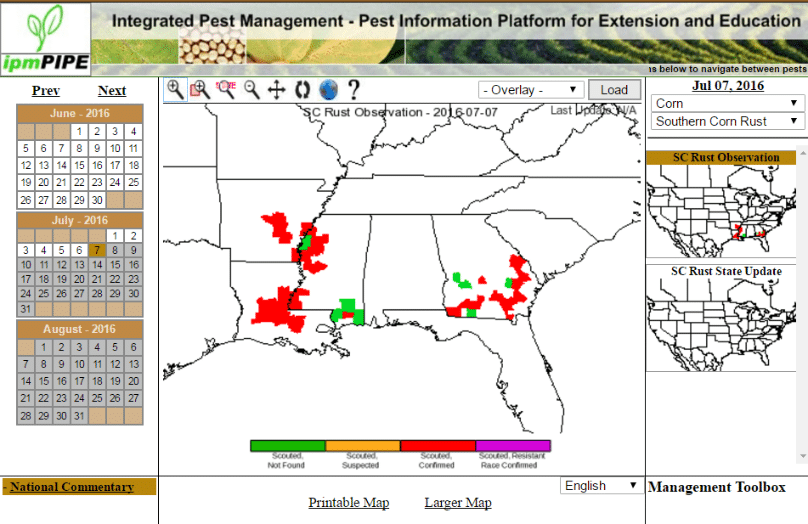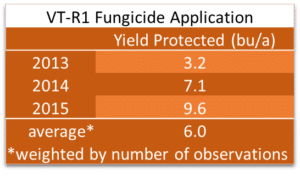So far corn diseases have been scarce in Tennessee in the 2016 season.
Only low levels of common rust and gray leaf spot have been reported in corn this season. The dry spells that have occurred most likely suppressed disease, but with regular rain events that could change quickly. Most fields are past tasseling/silking growth stages (VT-R1) which is the recommended window for fungicide application in corn. Hybrids that are susceptible to grey leaf spot, irrigated, no-till planted behind corn, and have good yield potential would benefit from a fungicide application at VT to R2. The table below summarizes data from replicated, small plot trials using a susceptible gray leaf spot hybrid, planted in continuous no-till corn field, under irrigation. The yield protected (bu/a over the non-treated check) from a fungicide application (various products tested) at VT-R1 has varied, but on average in the high disease risk field the trials were conducted, 6 bu/a were protected in treated plots compared to non-treated.
The major yield robbing disease in corn is southern rust, but as of today, it has not been observed in Tennessee. To track where southern rust has been reported in the U.S. visit: http://scr.ipmpipe.org/cgi-bin/sbr/public.cgi (see screen shot below). More information and images of common rust, southern rust, and gray leaf spot can be found in previous ‘Corn Disease Update’ article posted June 17, 2016

at news.utcrops.com.


